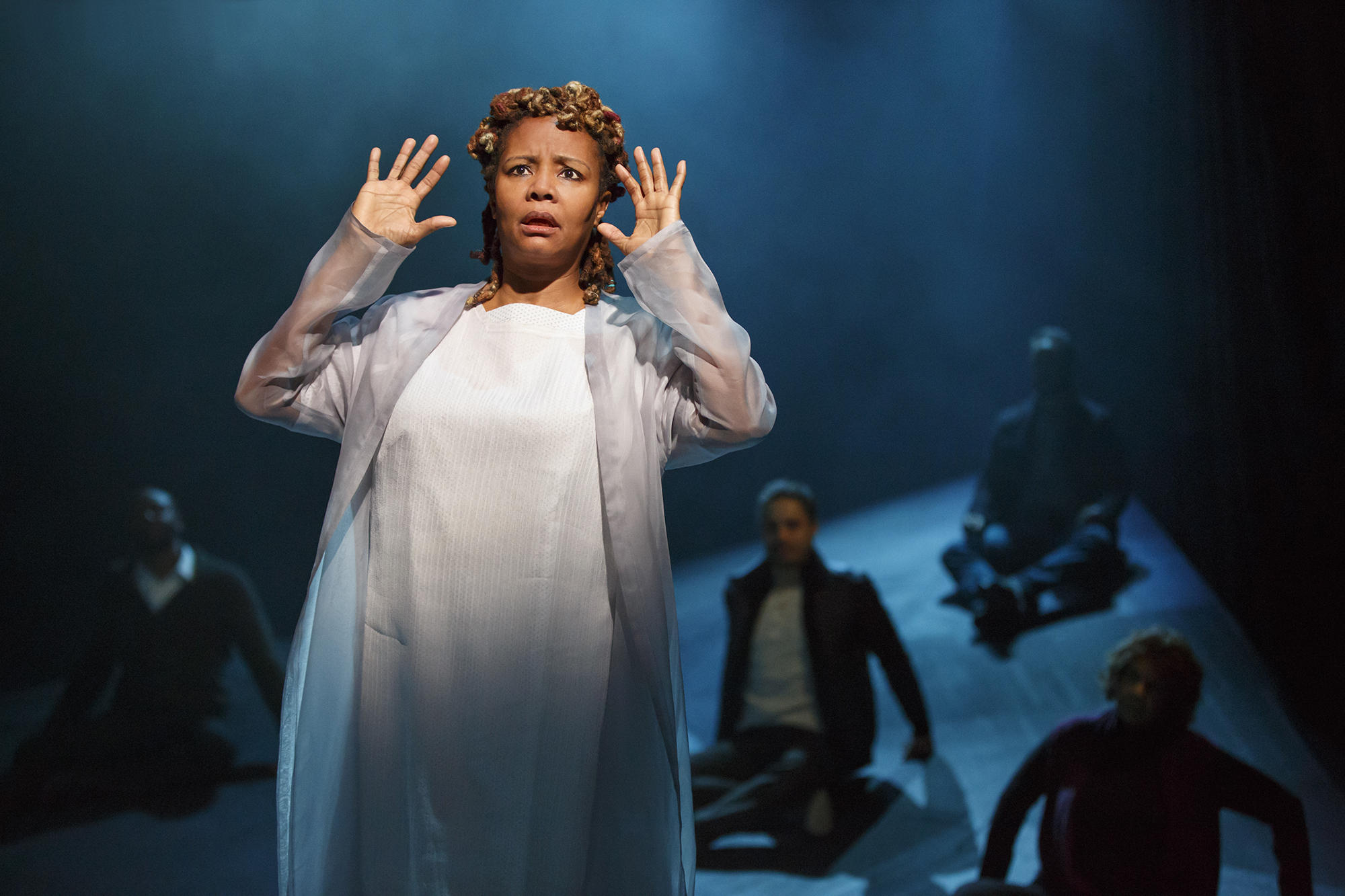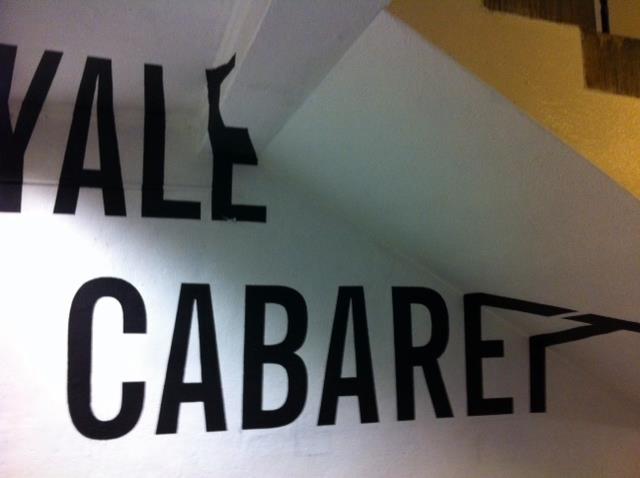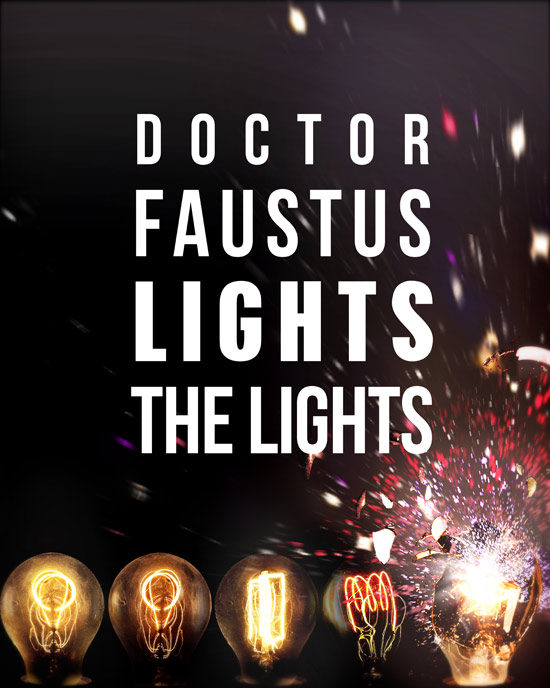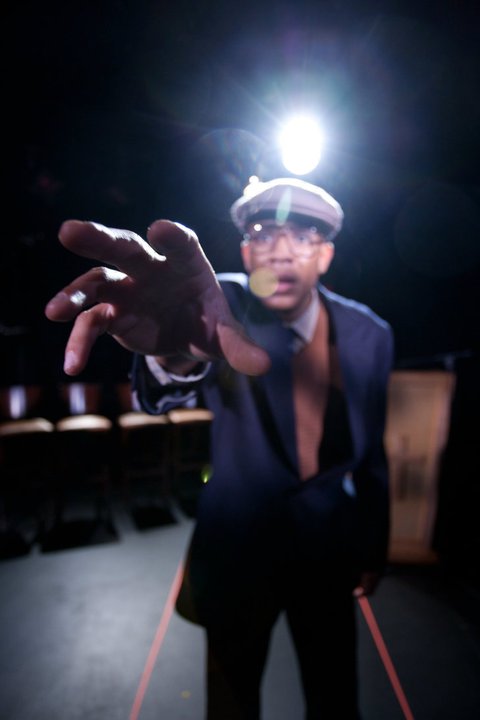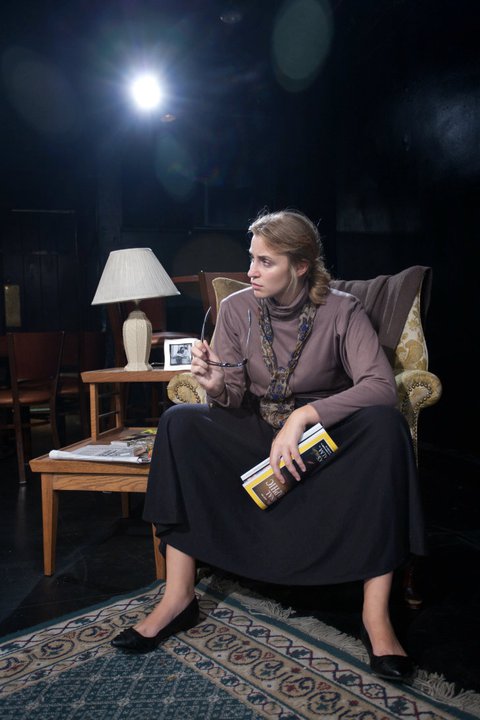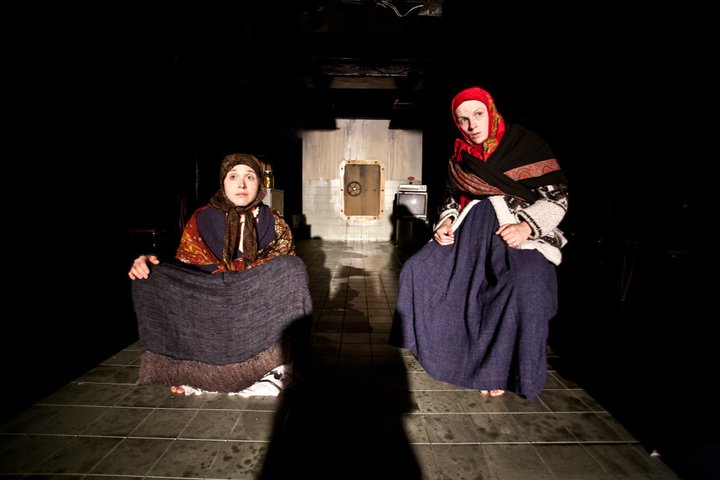Review of War at Yale Repertory Theatre Branden Jacobs-Jenkins’s War, directed by Lileana Blain-Cruz at the Yale Repertory Theatre, is a play more intriguing than satisfying. It sets up a situation where the unreal—a comatose woman’s inner life—is more interesting than the real: her sparring children at her bedside and the surprising relatives—from Germany—they didn’t know they had. One might say that the reason for the staging’s disjunction is that both the playwright and the director are more invested in Roberta’s elemental journey and have little sympathy for the play’s more naturalistic aspects. Which is a way of saying that if the latter are going to jell with audiences, the characters could use more detail, more nuance, and more than their own selfish whining to arouse our sympathies.
As Roberta, Tonya Pinkins does wonders with the minimal dialogue she’s presented with—reiterating “hello’s” and “am I dreamings” like someone whose sanity and sense of identity are slipping away. And War surrounds her with apes acted by the other cast members, particularly one who calls himself Alpha (Tyrone Mitchell Henderson) and who interacts with her telepathically via subtitles projected above the action. These exchanges are some of the most compelling in the entire play because Pinkins and Henderson are so very good at making these characters happen before us. Henderson wields grunts and dumb show with surprising subtlety and Pinkins has a way of registering thought that keeps our focus on what is happening inside Roberta.
Meanwhile, there are awkward situations—such as Elfriede (Trezana Beverly) who seems to speak German only and to have no very clear idea of what’s going on, and who is simply sitting by Roberta’s bed when the play opens and then claims kin, to the rather shrill astonishment of Roberta's children. As the brother and sister duo, Tate (Donté Bonner) and Joanne (Rachael Holmes) have the self-possessed elan of highly educated and well-off youth, and very short fuses when it comes to things like a mother’s stroke, coma, and unsuspected and unlikely relatives. To make matters worse, Elfriede is accompanied by a son, Tobias (Philippe Bowgen), who tends to fly off the handle, call upon God (not merely rhetorically), and hyperventilate when confronted with a comatose hostess and her clueless children.
The main burden of the play, apparently, is race as an aspect of life that inevitably causes frictions, particularly in families. The father of Roberta and Elfriede was black and served in Germany. In the U.S. he had black children with a black woman, Roberta’s mother; in Germany, he had mixed children with a white woman, Elfriede’s mother. For Jacobs-Jenkins, this real life situation—an offshoot of war that brings in inter-racial and international difference—has both dramatic and comic potential, though neither is given enough weight—or lightness—to rope us in. It may be too easy to say that none of the characters, including as well Joanne’s white husband Malcolm (Greg Keller), are likeable, with the exception of the woman who isn’t sharing any scenes with them—until a redemptive moment late in the play. For such bristling exchanges, someone needs to be more amusing or more profound. One is hard-pressed to look to Tate as the play’s spokesman as he self-importantly lectures his brother-in-law about the “meaning” of “African-American,” and tries to silence his sister and take over—alpha-male style—at the hospital. But, for good or ill, he’s got the most to say—though Bonner makes him fast-talking, impatient, and not very coherent. Generally, one feels most sympathetic with Nurse (Henderson again) whose bitchy-bro attitude in the hospital goes a long way to establish just how tedious these people are to strangers.
For Part One, the set is a soul-less white hospital space made interesting by its asymmetric austerity, with a black backdrop area where the apes come and go. The staging of the monkey business, so to speak, is handled well with shifts in lights and orientation that make us perceive a fantasized space in the midst of the everyday. The tenor of the talks between Roberta and Alpha establishes the ancient bond between the animal world and the human world. And some of the best jabs in the play come from War’s effort to make us—the actual audience—feel implicated in the spectacle, as observers, or as “the dead,” or as the inhabitants of a zoo.
In Part Two, we’re in Roberta’s home as her children attempt to rid themselves of their Teutonic kin and we all bear witness to an aria from Elfriede in the form of a missive written in German that Tobias dutifully and at times tearfully translates. Whether this disquisition on how to find oneness in the midst of difference is an openly sentimental bid for feeling or something more profound may be left to the viewer, but the Angels in America-like final gathering—in the zoo rather than Central Park—feels a bit too pat. Somewhere in the background of this play is the story of a black man who had two wives and two families, but that only gets brought to light indirectly in War’s most successful scene as Roberta—heeding Alpha’s dictum, “remember your father”—describes for us the end of his life.
Full of implication War may be, as we might reflect that the only ties to the expired and expiring World War II generation—those Robertas and Elfriedes—are themselves aging past the point of focused memory while their alarmingly self-enclosed offspring blithely dismiss the past as irrelevant or retrograde. There is also the theme of racial profiling and the thorny problems of racial as opposed to national identity as awkward elements in a national conversation about race that tends to become way too personal way too quickly.
War, to its credit, never lets us get comfortable but it also never compels us to give full credence to what we’re being shown. In the end, I suppose, it doesn’t matter as, well-trained monkeys, we’ll just make noises with our hands and exit the exhibit.
War By Branden Jacobs-Jenkins Directed by Lileana Blain-Cruz
Choreographer: David Neumann; Scenic Designer: Mariana Sanchez Hernandez; Costume Designer: Montana Levi Blanco; Lighting Designer: Yi Zhao; Sound Designer: Bray Poor; Projection Designer: Kristen Ferguson; Voice and Dialect Coach: Ron Carlos; Production Dramaturg: Amy Boratko; Casting Director: Tara Rubin Casting; Stage Manager: Will Rucker; Photographs: Joan Marcus
Yale Repertory Theatre November 21-December 13, 2014
